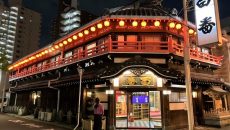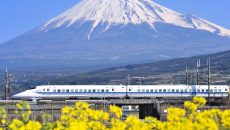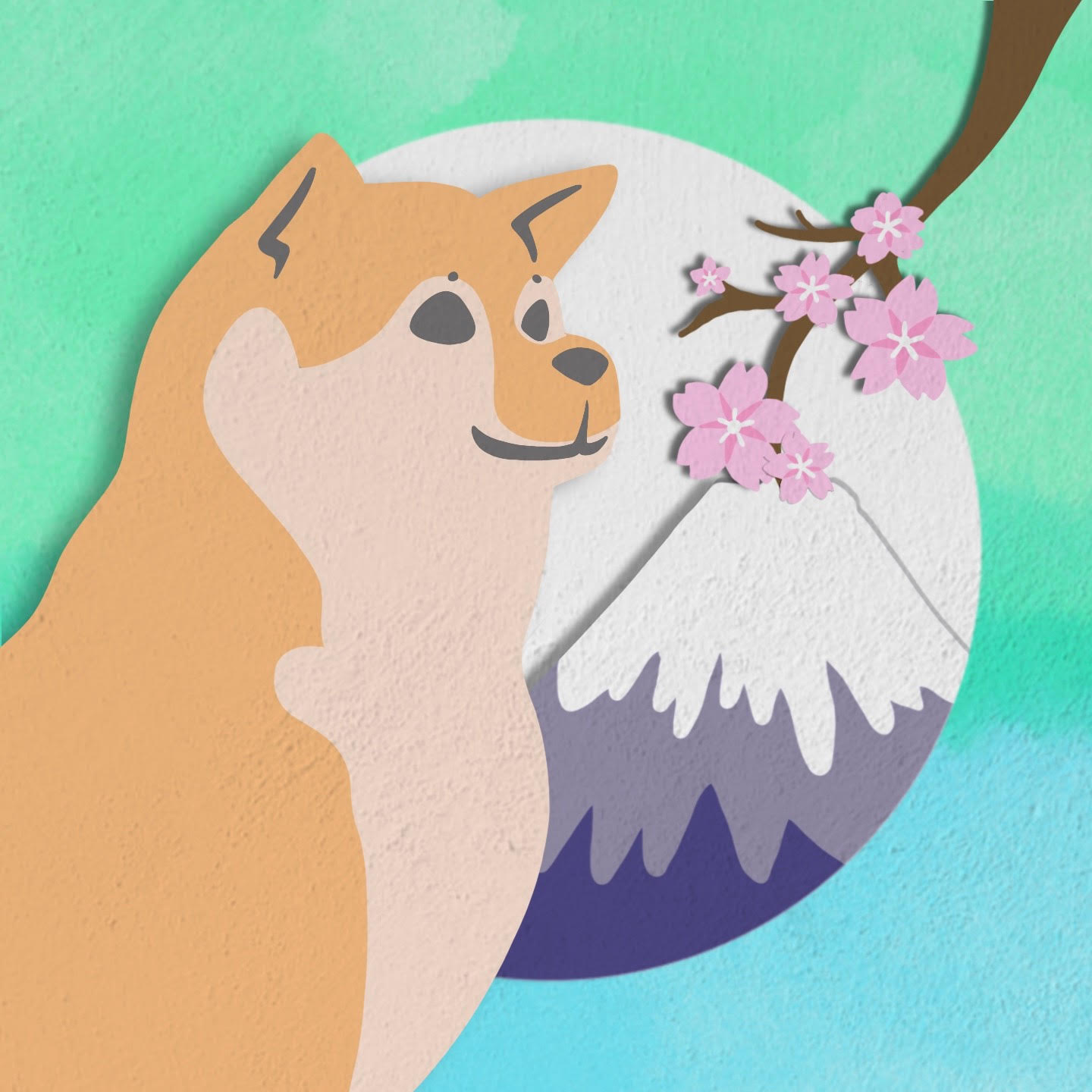An introduction to the top ten recommended Japanese street foods for those on a budget.

Although Japan still retains the image of being a very expensive place to travel, if you are willing to eat like a local, then it is surprisingly easy to find very high-quality food for just a modest amount of money. You will definitely not break the bank nor go hungry by trying authentic “street food” which is also safe to eat without the fear of getting an upset stomach.
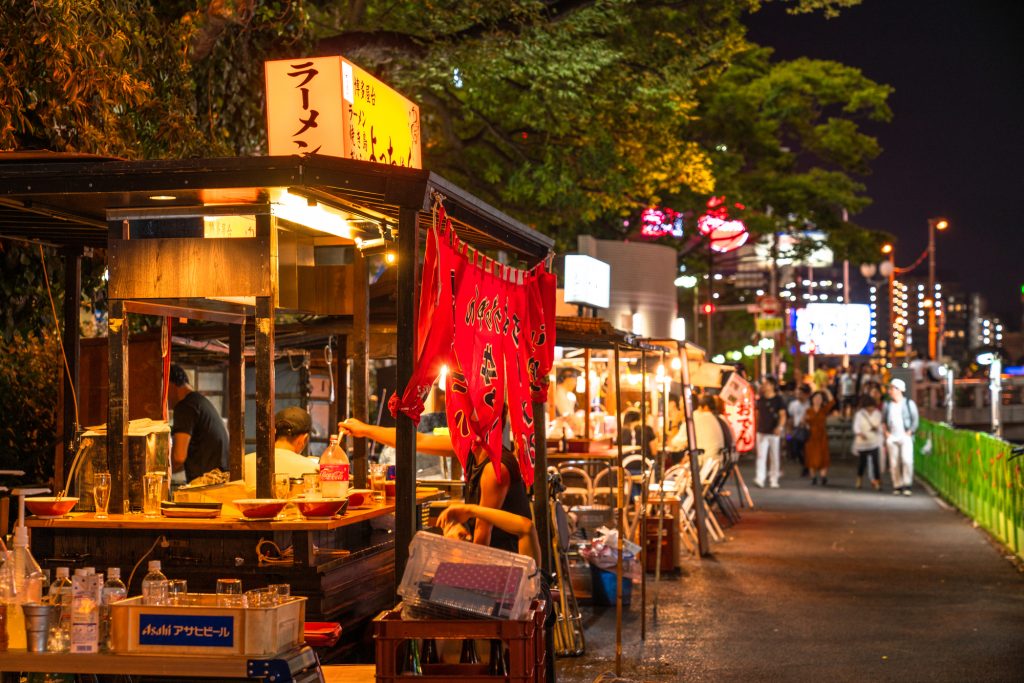
When it comes to dining out in Japan, more of an issue will be simply deciding where to begin. There is, in fact, so much variety that we will introduce two “top ten” lists by focusing on the top ten types of Japanese food at both the high- and low-end of the price spectrum. See Part 1 for indigenous haute cuisine.
Top Ten Dining on a Budget
1. Ramen Noodles (ラーメン)
For hundreds of generations, the Japanese have been particularly skilled at cultural appropriation from abroad followed-up by local refinement. There is no doubt that China and its myriad of food choices have been the model for most of recorded history beginning with ramen noodles (ラーメン).
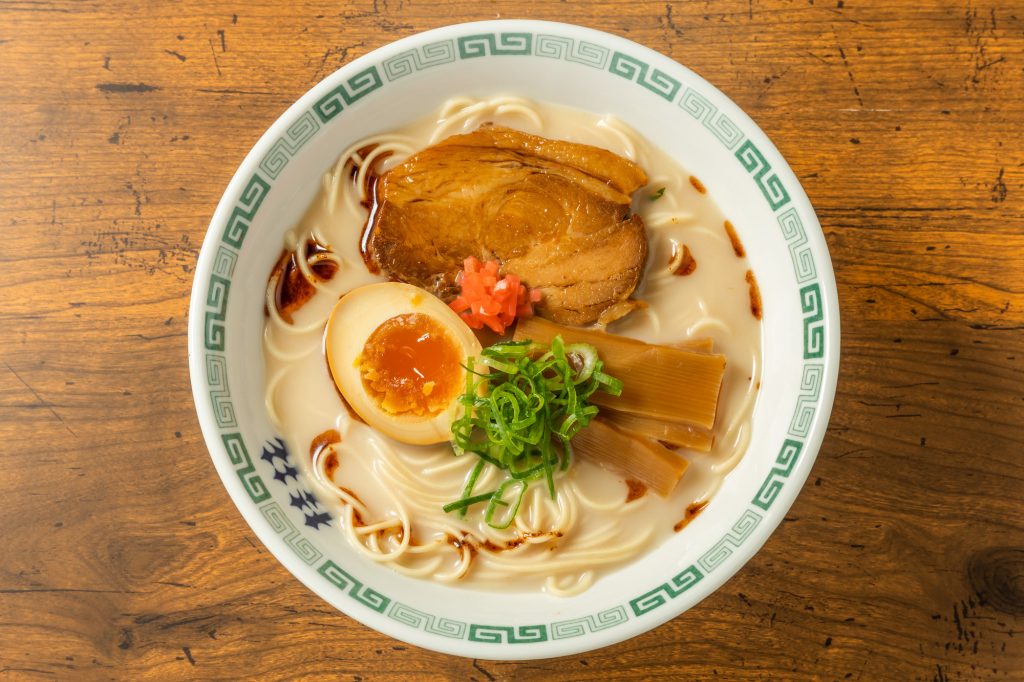
Ramen is now the ultimate fast food in Japan. It is not uncommon to find lines as long as a city block or even longer in front of the most popular ramen joints – though many are truly hole-in-the-wall traditional-style pop-up restaurants that look like they would blow over in a storm. A lot of these places are only open at night but stay open until the wee hours of the next morning. There are four main types of ramen, and you can tell the difference by the broth:
- Shio – The “garden variety,” relatively light version is shio or salt ramen. As you might expect, it is, in general, salty.
- Shoyu – A close relative to shio ramen particularly popular in Tokyo is shoyu or soy sauce ramen, which tends to have a rich flavor.
- Miso – While you can find it anywhere, it is best to travel way up to Sapporo in Hokkaido to sample miso or fermented bean paste ramen.
- Tonkotsu – At the opposite end of the country, the more adventurous should try tonkotsu or pork bone ramen, particularly when visiting Fukuoka, the largest city in Kyushu. People tend to love or hate tonkotsu ramen due to its distinctive odor.
All four of these noodle dishes are usually served as a hot soup, and there are all sorts of toppings from which to choose.
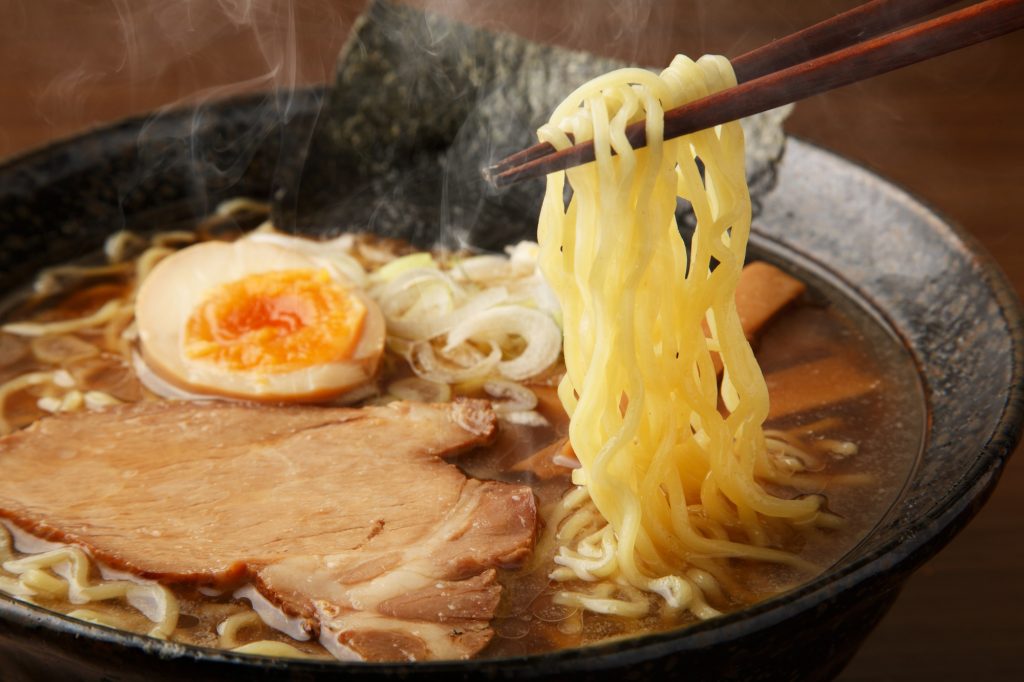
An offshoot of ramen is tsukemen (つけ麺), which is a plate of ramen noodles served cold. Ramen is the ultimate comfort food for Japanese people, and they tend to have almost a religious devotion to their favorite place to chow down on ramen. A hearty bowl of ramen will typically cost anywhere from 500 to 1,200 Japanese yen (JPY), depending upon the size and toppings.
2. Soba, Udon and Somen Noodles (そば、うどん、ソーメン)
Soba which is popular throughout the country but particularly common in and around Tokyo is a hot or cold dish of thin noodles cut from buckwheat flour or a combination of buckwheat and wheat flours which is served in a savory broth.
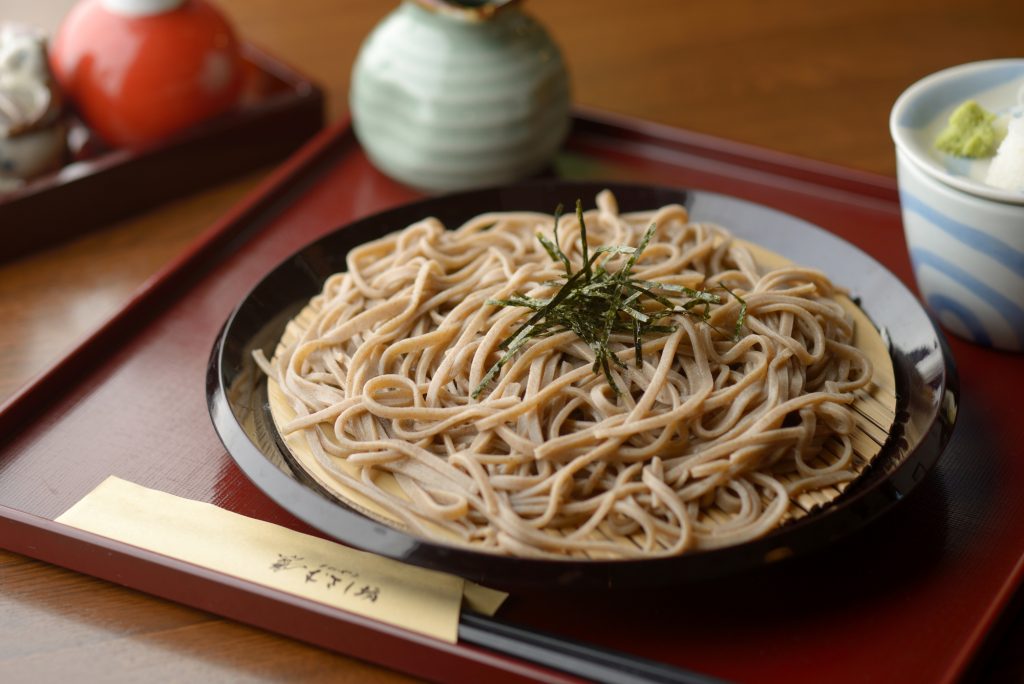
Udon which is made from thick wheat noodles and is also served either hot or cold tends to be the noodle dish of choice for people in the Kansai Region in and around Osaka. There is, however, one prefecture or state in Japan where udon consumption is insane, accounting for more than 230 meals/person per year! This is Kagawa Prefecture on the island of Shikoku.
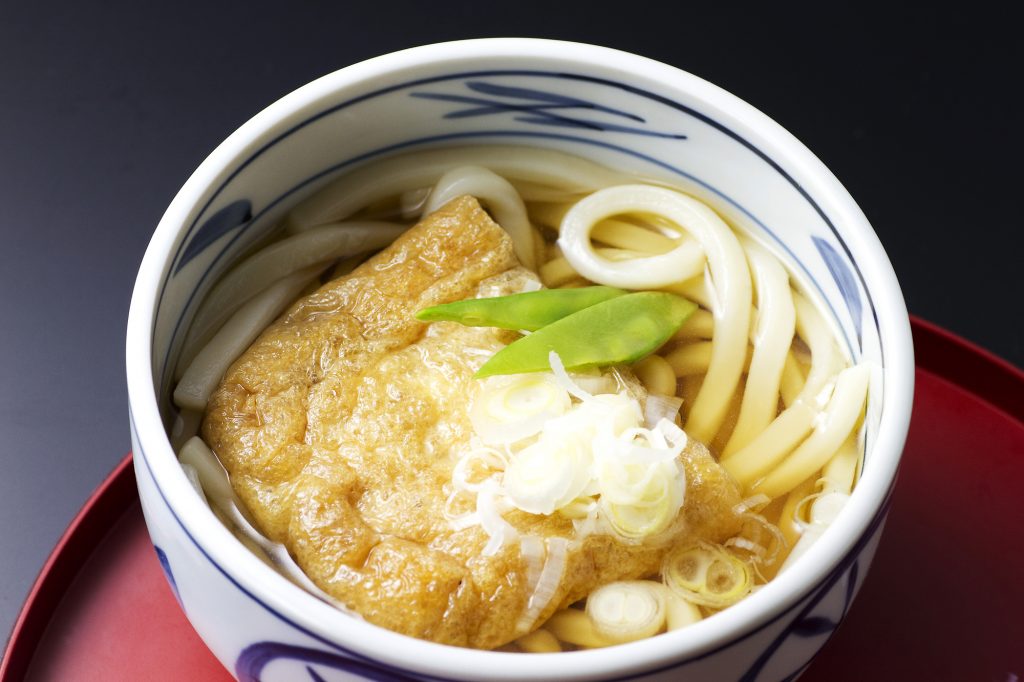
More similar to noodles found throughout Asia, Japanese people love somen noodles which are also made out of wheat flour but cut very thinly with a diameter of less than 1.3mm. Cold somen noodles make for an especially refreshing, light meal in the heat and humidity of Japanese summers.
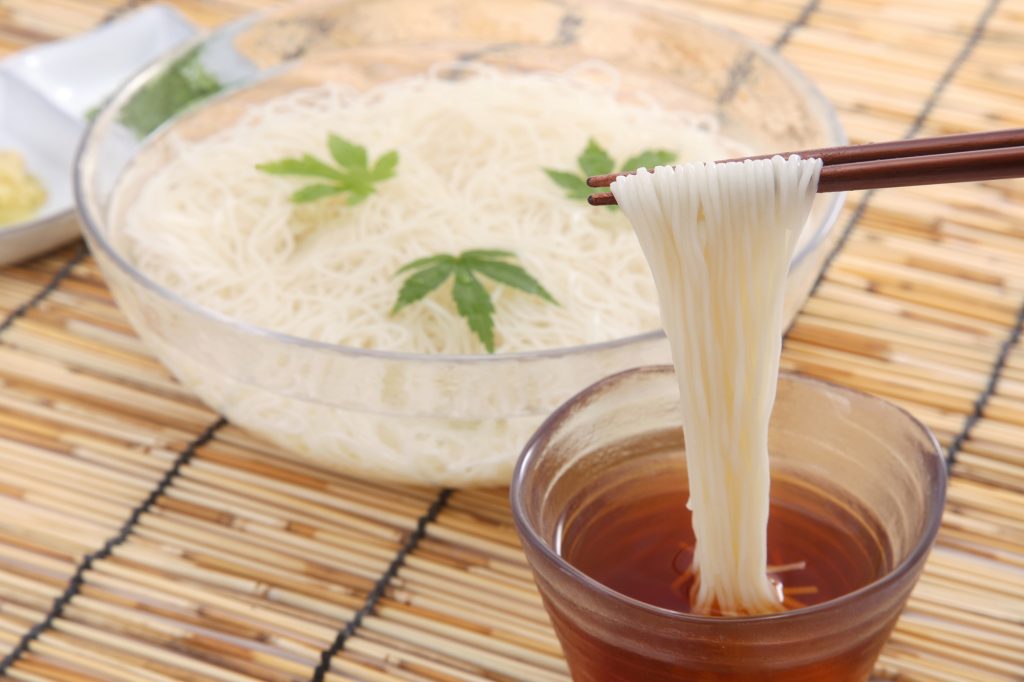
Like with ramen, the polite way to eat soba, udon, and somen is to clutch several strands in between your chopsticks and slurp them up as quickly as possible. Don’t worry about making noise while eating. The proper way to eat noodles is, in fact, to slurp loudly. If you just want the noodles without the soup, soba and udon can also be grilled as yakisoba or yakiudon. A meal of soba, udon, or somen will typically cost anywhere from 500 to 1,200 JPY, and the cheapest place to try these noodles is at a restaurant without seating called tachi-gui or “stand-up eating.”
3. Rice Bowls (丼ぶり)
If you really want to get filled up fast, try ordering a piping hot bowl of rice called donburi which comes topped off with chicken, raw fish, or beef. My absolute favorite Japanese comfort food is called oyako-don which literally means “parent-child rice bowl” and is code for a chicken and egg topping (which came first concept) mixed with onions. There are lots of cheap restaurants that specialize in gyu-don or beef rice bowl including the popular chains Sukiya, Matsuya, and the ever-popular Yoshinoya. This is true Japanese fast food, and the price is very competitive vs. McDonalds, for example. You can order a quick snack which should be quite satisfactory for less than 300 JPY. Expect, though, to pay a small premium for more rice (“o-mori” size).
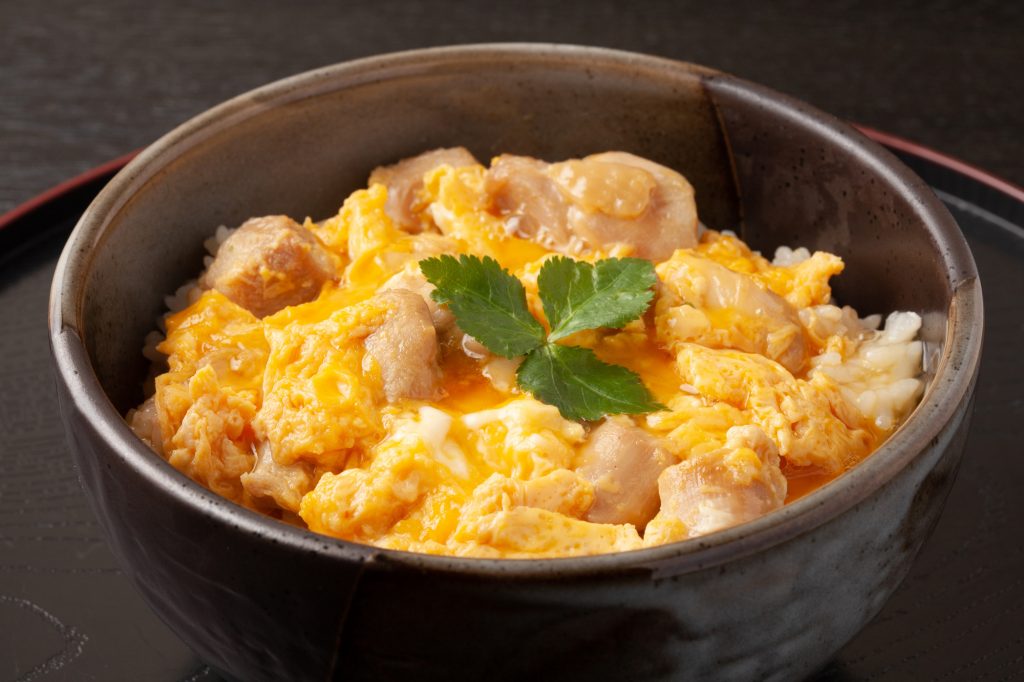
4. Bento Boxes and Onigiri Rice Balls (弁当、おにぎり)
You can get a quick snack 24/7 at any of Japan’s 50,000+ convenience stores, known as konbini, by picking up a bento box lunch or dinner or an onigiri rice ball. A bento is a travel-ready meal of rice, fish or meat along with assorted other toppings that are served in a small box.
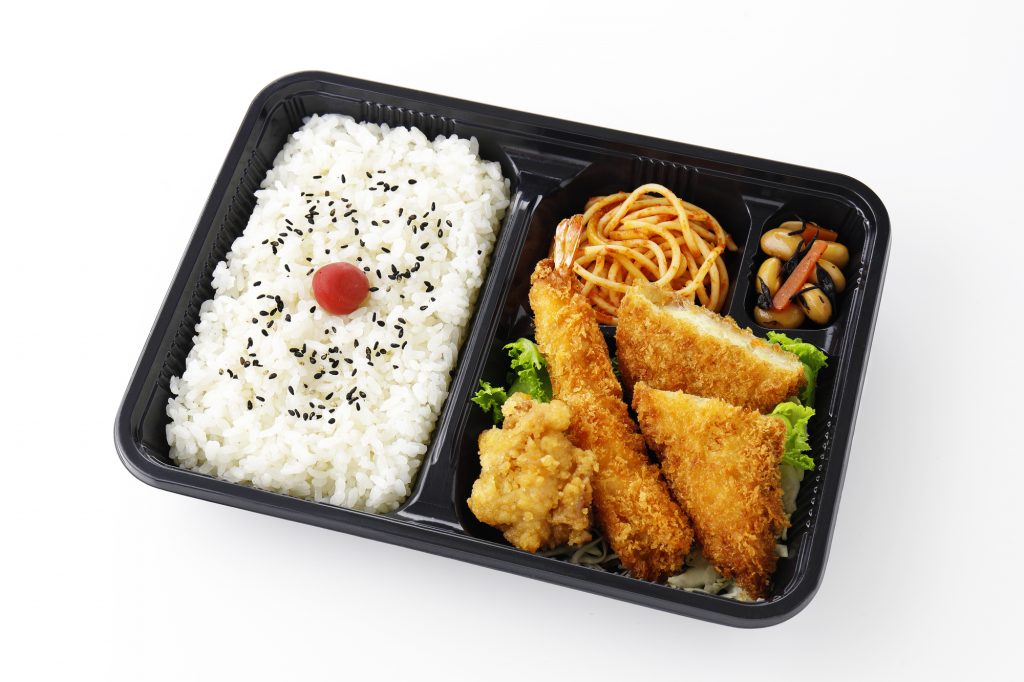
Onigiri are triangular shaped rice balls that are typically filled with a small amount of fish and wrapped in thin, green seaweed.
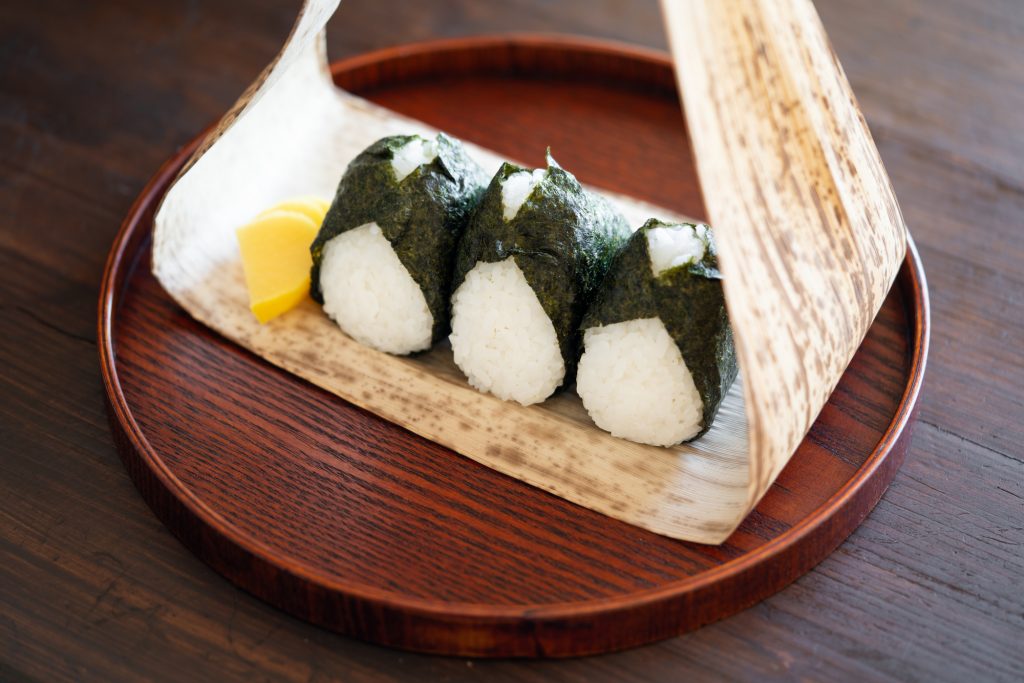
Both are perfect for eating on-the-go. Another prime location at which to purchase bento box lunches or dinners is at a train station. Such meals are called eki-ben (“eki” means train station). While size matters, a typical bento box will cost anywhere from 400 to 600 JPY, and onigiri goes for approximately 100 to 150 JPY/piece.
5. Oden (おでん)
Usually, from fall through spring, konbini typically feature near the cash register slowly simmering tubs of oden. Oden is a soy-flavored soup of boiled eggs, daikon radish, konjac elephant yam, and various shapes and sizes of processed fishcakes.
Besides konbini there are lots of restaurants that serve oden, and supermarkets sell whole packs of oden to make it easy to recreate the experience of eating out right within your own home in no time. Each component will typically cost only 50 to 100 JPY, and you can pick and choose what you want by the piece. To add more flavor, be certain to smother some hot mustard sauce on each piece of oden.
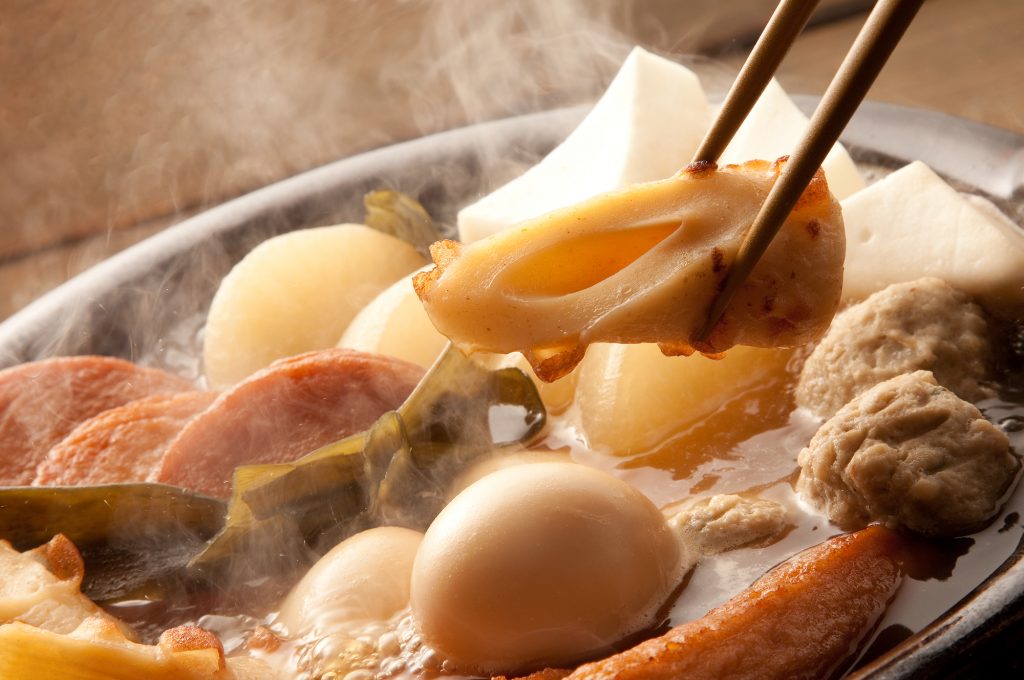
6. Kaiten Sushi (回転すし)
While the old adage “you get what you pay for” generally applies in Japan, too, going to an expensive sushi bar (see Part I for more details) is not the only way to enjoy sushi in Japan. A much more economical option is to visit a kaiten sushi or “revolving sushi” restaurant, which features small plates of one or two individual pieces of sushi moving around on a conveyor belt right in front of your seat or table.
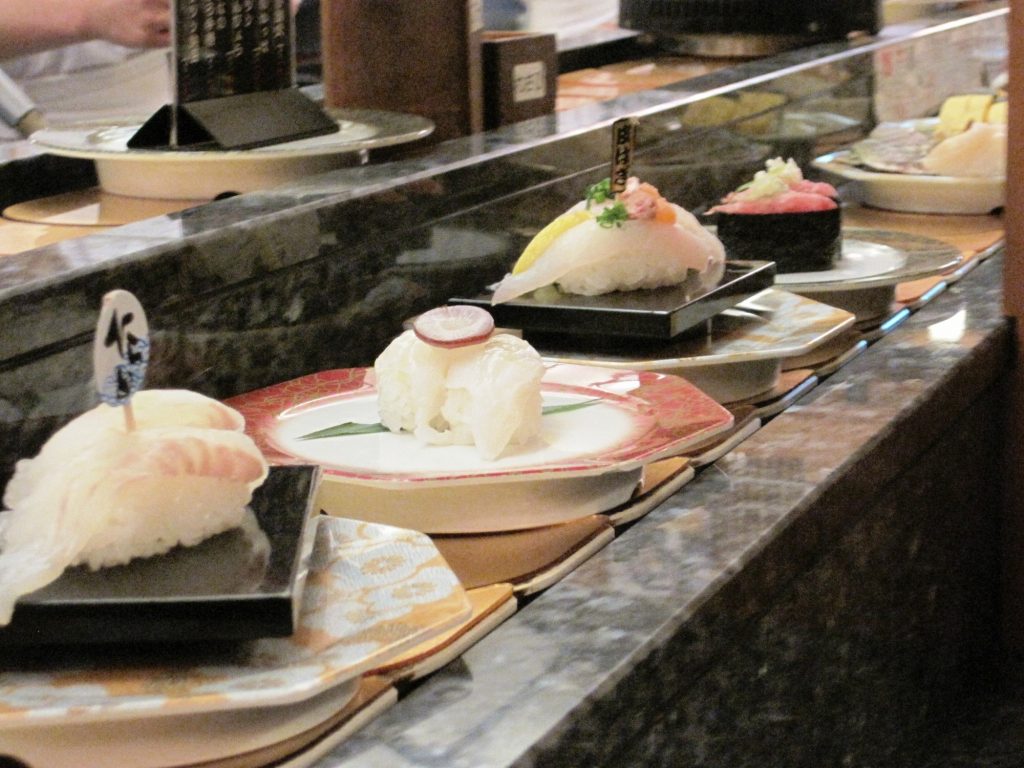
You pay by the number of plates of sushi that you consume, and pricing may either be fixed or variable depending upon the color of the plate. At the end of the meal, your bill will be calculated by the overall value of the unique combination of plates that you stack up in front of your seat.
Special orders which are typically executed via a touch screen panel at eye level result in the automatic delivery of your own sushi right to your seat. Some kaiten sushi chains accomplish this by summoning a mini bullet train that drops off your sushi. Kaiten sushi is not only a lot of fun, but it is also, in general, very reasonably priced. While pricing varies, some restaurants charge only 100 JPY/plate, whereas others charge a premium for more expensive types of sushi.
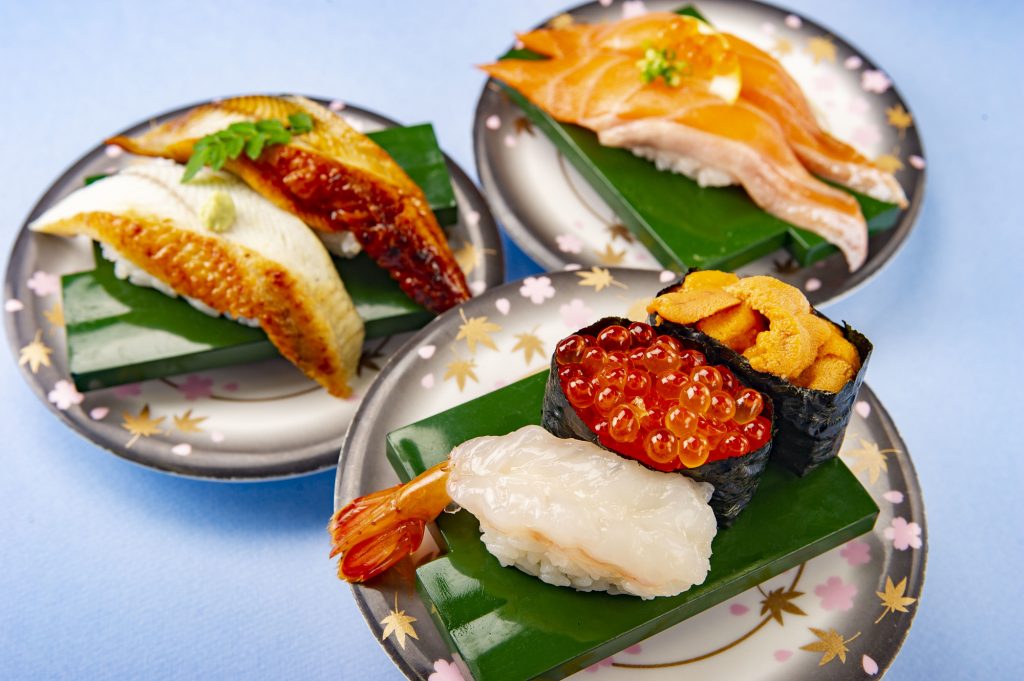
Sushi can be deceptively filling. Thus, after about ten plates or so, you will probably start to feel full. When you cannot possibly eat any more sushi, simply use the same touch screen panel to request your bill. An attendant will come right over to your seat either to count by hand the number of plates at your table or simply wave an electronic wand to register the number of IC chips that are embedded in each plate. The whole process is extraordinarily efficient and fun to watch.
7. Kara-age (唐揚げ)
This inexpensive, fast food is Japanese style bite-size chicken nuggets. You can find kara-age in supermarkets and konbini, although it tastes much better from the made-to-order specialty stores. Some of these places make it possible to order specific sections of the chicken and only begin deep-frying until after you have ordered. Each piece is first marinated and then coated with flour and potato or corn starch before being fried in light oil.
In some parts of the country, Japanese families routinely order take-home kara-age by the kilo to augment their home-cooked meals. Besides the chicken, you can also get kara-age fish, squid, octopus, and oysters. While you might not need this much, typical pricing is about 1,500 JPY/kilo. At a konbini, each piece generally runs about 50 JPY.
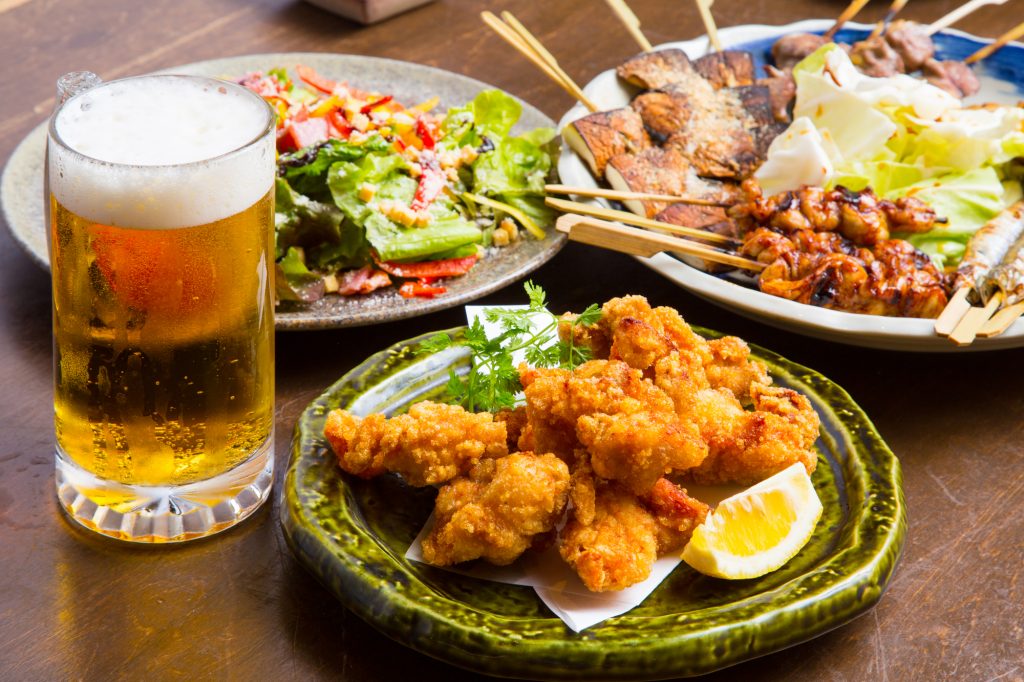
8. Okonomiyaki (お好み焼き)
The literal translation of okonomiyaki is “grilled as you like it.” It is somewhat like an omelet, but many people refer to okonomiyaki as “Japanese pizza.” Okonomiyaki is, essentially, a savory pancake containing a variety of ingredients such as green onions, thinly sliced pork belly, shellfish, and vegetables mixed into a wheat-flour-based batter.
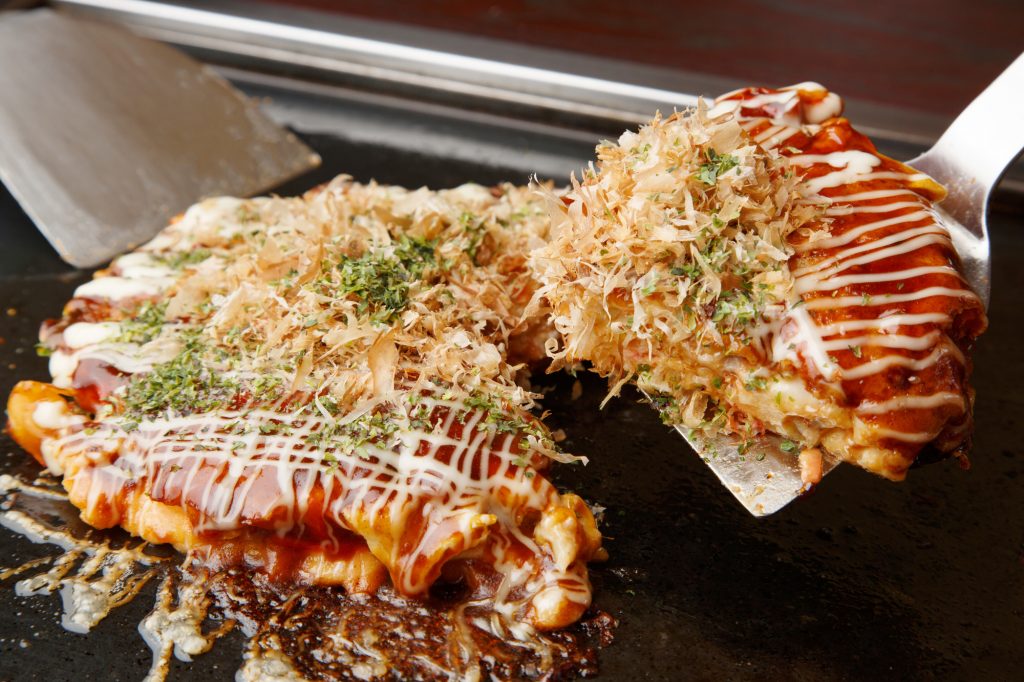
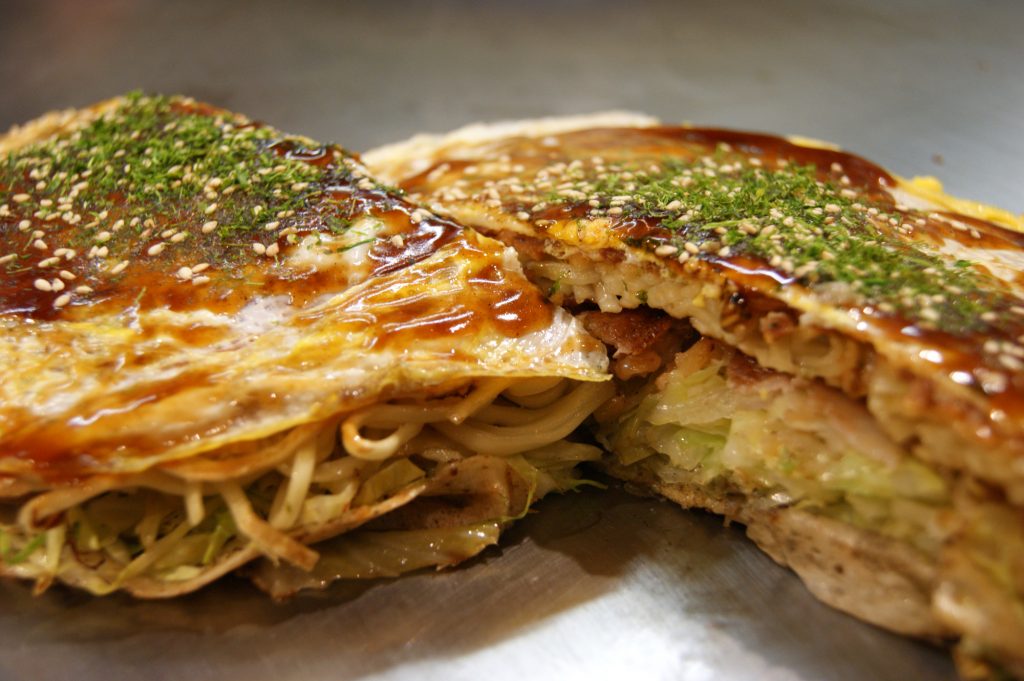
Although cabbage seems to be a common component of okonomiyaki, the batter and toppings vary by region. Okonomiyaki is a local favorite—especially in Hiroshima and Osaka—where it is recognized as true Japanese soul food. Hiroshima natives prefer to have the raw ingredients layered rather than mixed, and they typically add noodles and top everything off with a fried egg.
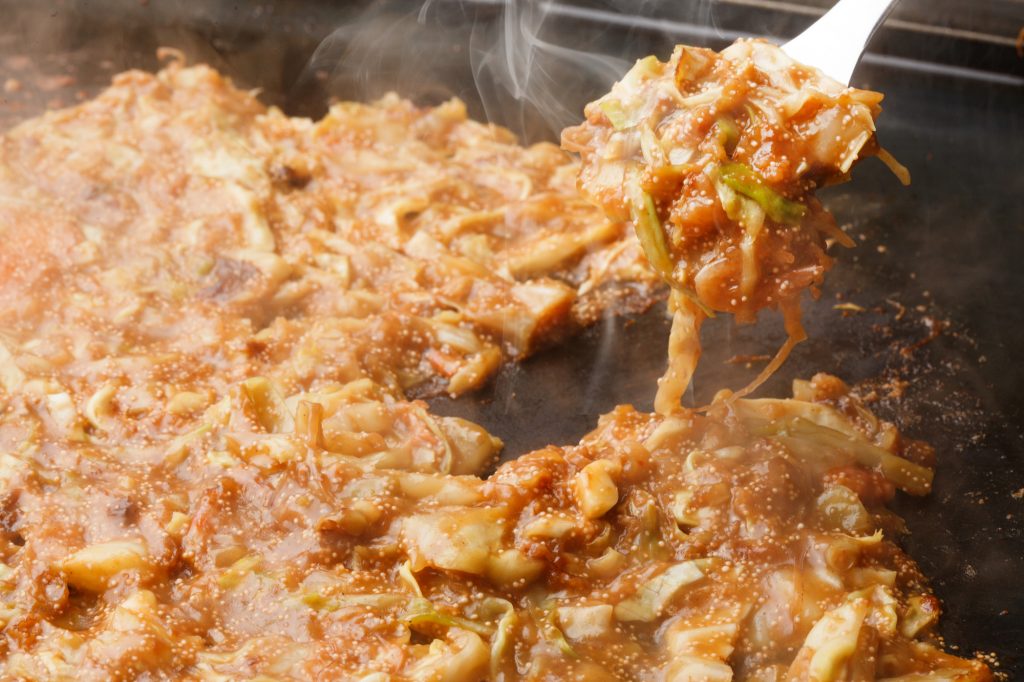
An offshoot popular in Tokyo is called monjayaki (もんじゃ焼き) which features more of a liquid sauce. This is a very filling, high-calorie affair and runs about 1,000 to 1,200 JPY/batch.
9. Takoyaki (たこ焼き)
A particular favorite throughout the Kansai Region, takoyaki or grilled octopus balls is yet another wildly popular fast food in Japan. While sometimes eaten as a whole meal, takoyaki usually is just a snack or appetizer. It is a 2 to 3cm diameter ball of minced or diced octopus, tempura scraps, pickled ginger, and green onions, which are cooked in a specially molded pan in a wheat flour-based batter. You don’t just order one ball at a time. The typical order size is six or more balls, which will only set you back about 100 JPY/ball.
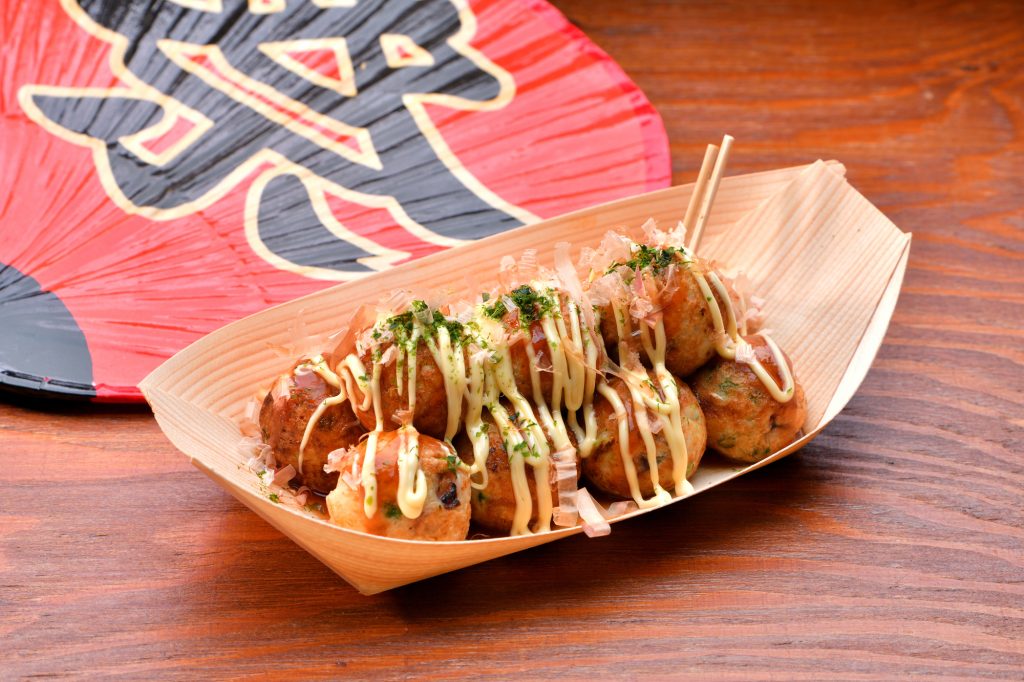
10. Viking (バイキング)
If you’re the type of person who just cannot make up their mind and desires choice, then you need to visit a Japanese “Viking.” No, I am not referring to a Norse warrior with one of those cool horn helmets. “Viking” or, more properly, “baikingu” is the Japanese word for an all-you-can-eat buffet. Probably due to the pronunciation, it is not surprising that the Japanese have simply re-defined the meaning of the uncomplicated term “Viking” rather than the more accurate Swedish word smörgåsbord.

In any case, while the COVID-19 crisis has put a damper on such restaurants, the Japanese absolutely love their baikingu which offers true value-for-money. A word to the wise, don’t lose your place in line, as there is plenty of competition for that last meatball! Seriously, it has thus far been common for hotels to feature baikingu lunches and dinners for about 1,500 JPY/head. Breakfast baikingus are typically included in the price of a hotel room.
Conclusion
It is not an exaggeration to say that Japan has some of the best food in the world—combined with extremely high quality of the freshest ingredients, exceptional service, and in many cases quite reasonable prices. While most people associate Japanese cuisine with sushi, there is a lot more to it. While this list is focused on reasonably priced options for those on a budget, it is also certainly possible to find a wide range of meticulously prepared and exquisitely presented high-end selections (see Part 1).
Also, please realize that both lists are only just scratching the surface. Japan offers such a myriad of breakfast, lunch, and dinner selections that you could spend months trying something different each day of the year. At the very least you will definitely not go hungry!
Related Articles
AI Girlfriends: Exploring the World of Virtual Companions
AI-generated girlfriends are growing popular on Japanese Twitter. Learn more about what they can do, and what it could mean for the future.
Discover Japan’s Top 10 Must-Visit Places
From stunning landscapes to bustling cities, Japan offers many unforgettable experiences. Here are Japan’s top 10 best places to visit!

